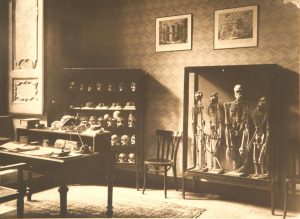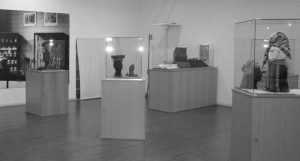The Museum was officially founded in 1926.
The history of the Museum of Anthropology and Ethnography of Turin (MAET) is connected to the University Institute of the same name, whose origins date back to 1923, the year in which Professor Giovanni Marro (1975-1952) instituted the teaching of anthropology.
In 1925 the Institute had only two rooms at its disposition in a mezzanine of Carignano Palace; here Marro started to collect numerous anthropological specimens, the fruit of excavations he had carried out in Egypt some years earlier. Anatomical and ethno-anthropological collections of various origins and sources as well as specimens collected by his father Antonio Marro (1840-1913), pyschologist, sociologist and anthropologist.

In 1936 the collections were transferred to the seat of the old Saint John the Baptist hospital. With more space at its disposition, the Museum collections enlarged considerably. On the death of Professore Marro in 1952 the responsibility for the collections was taken over by his assistant, Savina Fumagalli (1904-1961), who was subsiquently charged with teaching anthropology. After the death of Fumagalli a new phase of restructuring was carried out between 1962 and 1968 laying out new criteria for the exposition and conservation of the collections.

In 1984 the museum was closed to the public as the premises in the old building no longer corresponded to security regulations. In the following years numerous activities took place in order to present the collections through temporary or itinerant thematic exhibitions or cycles of conferences. At the moment a project is underway for transferring the collections to the Anatomical Institute Building (University of Turin).
